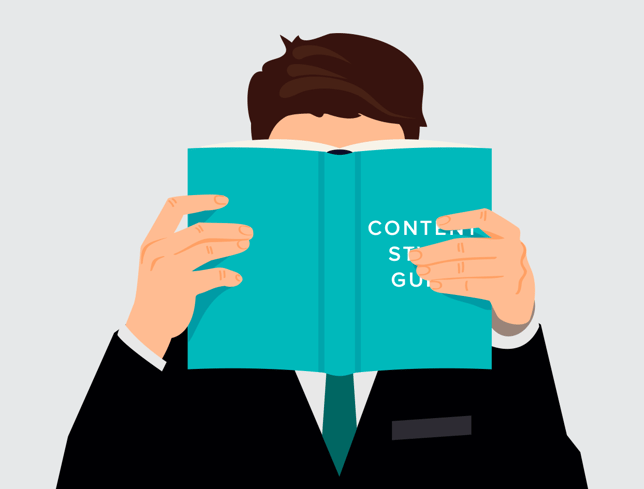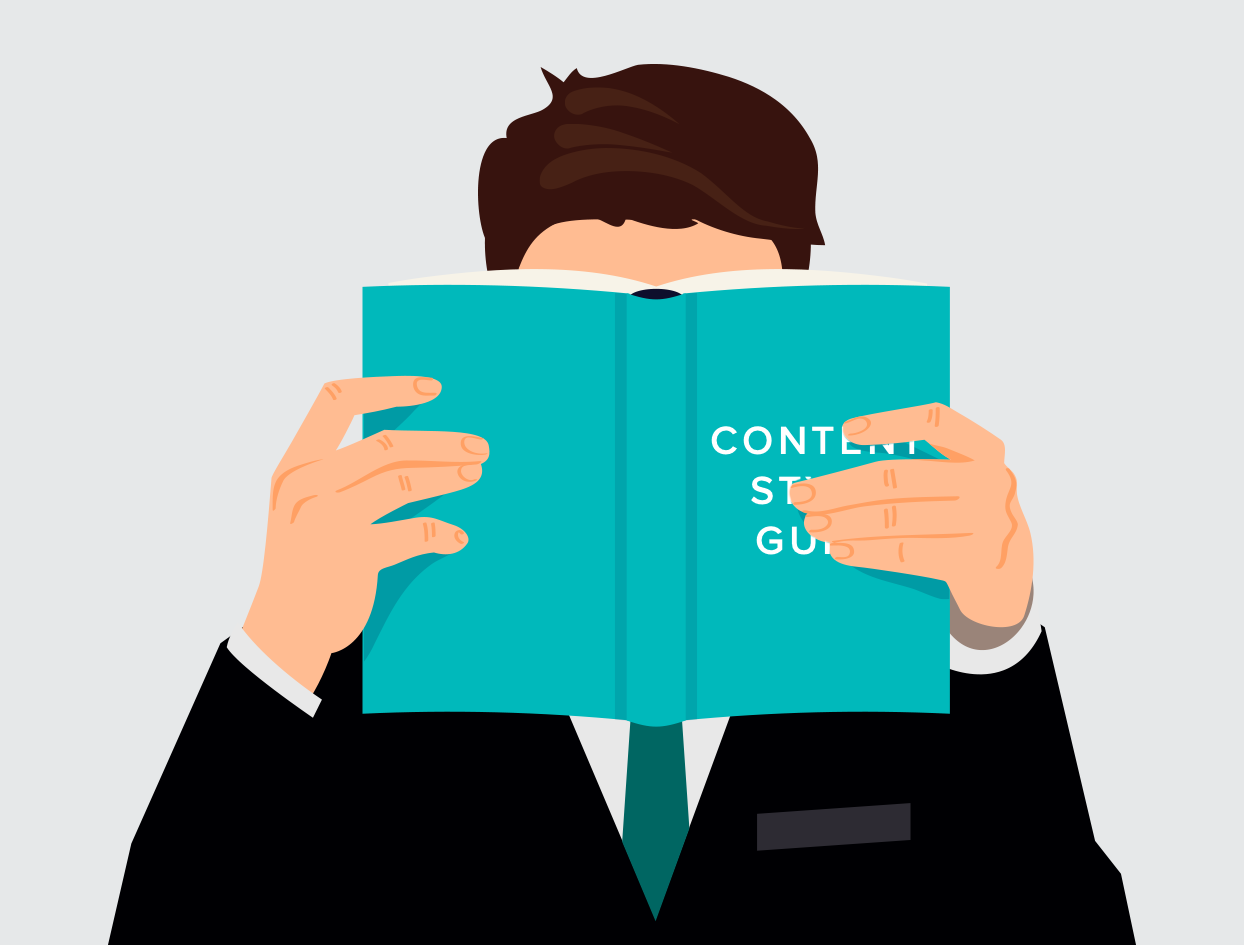
Originally published on May 31, 2016. Updated on June 18, 2021.
If you’ve read any kind of news, you’ve probably heard of the Associated Press and its style guide. Also known as “the journalist’s bible,” this resource is the holy grail of style knowledge for journalists and anyone else looking to get published in the many online publications that defer to this sacred text.
But for content marketers who are tasked with creating engaging content for their audiences, this one stylebook alone probably won’t meet all their brands’ needs. To quickly and effectively create content, you need a style guide specifically designed with your industry and company in mind.
What Is a Content Style Guide?
A content style guide is a set of standards for the writing and formatting of content for a specific publication, organization, website, or field as a whole. Ultimately, style guides establish and enforce style rules to improve communication and foster consistency.
Your organization probably already has a style guide for design. But if your company is creating content — whether it’s posted on your company blog, LinkedIn, Medium, online publications, or other platforms — you need a style guide for your content, too.
—
Looking for insight on how to create content guidelines for your blog's guest contributors?

—
Why You Need a Content Style Guide
Sure, you can use AP’s style guide for your content. In fact, Influence & Co.’s editorial team uses it for consistency in our own content and our clients’ content. But that style guide didn’t quite meet all of our needs, so we created our own style guide to supplement.
Developing your own content style guide is important for several reasons:
- Content consistency: If your content team is anything like ours at Influence & Co., you might manage more than a couple of contributors to your blog, and multiple editors touch that content before it’s published.
Every author will have their own writing style, voice, and tone, but there needs to be some level of consistency so you don’t publish anything that doesn’t position you in the right way. That’s where a style guide comes in and ensures consistency across even the most diverse group of contributors.
- Brand consistency: One of my biggest pet peeves is when a company’s own website displays its name about 5,000 different ways. Where does the apostrophe in the company’s name actually go? What does it do again? Who even are these people?
A content style guide that includes your company name, acceptable abbreviations for your company name, and your company’s tagline or slogan can help keep your branding consistent — and avoid confusing consumers.
- Saving time: Do you find that your team is asking the same style or grammar questions over and over again? Enter the content style guide.
When our team asks the same question (e.g., “Should we use ‘decision-making’ or ‘decision making’?”) several times, we go ahead and add the answer to our style guide. This way, our editors can find the answer quickly without interrupting someone else’s workflow.
- Staying current with industry trends: Broad style guides are slow to change. On the other hand, having your own internal content style guide allows you to make additions and adjustments as needed based on what’s happening in your industry now.
For example, AP still uses “search engine optimization” and only uses “SEO” on subsequent references. We added “SEO” to our internal style guide, however, noting that it’s acceptable to use “SEO” on first reference because that’s the industry standard.
How to Create a Content Style Guide in 5 Steps
Now that we’ve covered the “why” of adopting a content style guide, let’s move on to the “how.” Here are some best practices to keep in mind as you start developing your content style guide:
1. Choose an existing style guide to follow.
Find a stylebook that fits your industry and needs, and don’t repeat anything that’s already in that guide. Use your internal style guide to note any additions or adjustments that apply specifically to you. Make sure to note at the beginning of your style guide which external guide you use, as well as which dictionary your company will default to. For example, Influence & Co. uses “The Associated Press Stylebook” and Merriam-Webster’s online dictionary.
2. Decide what types of entries you should include in your style guide.
Because we’re a company that specializes in providing content marketing services to clients, our style guide is probably much more extensive than yours needs to be. But here are some sections you should consider including:
- Formatting guidelines: This section outlines what font, spacing, margins, alignment, and file name conventions should be used.
- General guidelines: While your style guide shouldn’t be a grammar primer, our guide includes some tricky grammar rules that have come up during the content creation process. This way, team members have a resource to quickly reference when they come across commonly troublesome grammar rules.
- Word list: This is by far the lengthiest section of our style guide and the one that’s most frequently updated. If we find a discrepancy between AP’s guidance and the way a term is written within an industry, we add it to our style guide. For example, AP still uses “health care,” but our team discovered that the most common spelling in industry publications is “healthcare,” so we updated our style guide accordingly.
- Policies: Your style guide is a great place to include any policies related to things like social media use or legal considerations. Ultimately, the goal of this section is to keep your content from getting your company into trouble. Consider speaking with your legal counsel to determine what needs to be included in this section of your style guide.
3. Encourage collaboration among editorially minded team members.
Your style guide shouldn’t be doctrine that’s forced on your team members; it should be a collaborative effort that takes into account their research, knowledge, and opinions.
Our style guide is overseen by our managing editors. They are the only ones who add to, remove from, or otherwise change our style guide. But they take into account suggestions from our editors and update the style guide accordingly — usually after conversations in our “#edits” Slack channel.
4. Outline a hierarchy of resources for team members to follow.
When you reference multiple sources during the content creation process, it’s vital that you communicate to teammates which resources carry the most weight. The resource at the top of the hierarchy carries the most weight and trumps all other resources, and the further you go down the list, the less weight the resources carry.
For instance, your hierarchy of resources may look like this:
- Internal style guide: The internal content style guide you create will carry the most weight. Team members should look here first when searching for an answer to a style question.
- The external style guide: If a question can’t be answered by looking at your internal style guide, team members should look to the external style guide you’ve selected (e.g., “The Associated Press Stylebook”).
- The dictionary you have selected: If a style question can’t be answered by the above two resources, the dictionary may hold the answer. Be sure team members are using the same dictionary to ensure consistency across your team.
- Your selected grammar resource: If a team member is looking for an answer to a grammar question that isn’t answered by any of the above resources, they should look to the book or website your company defaults to. We use “Working with Words.”
5. House your content style guide in a place that’s easy to access and update.
If your style guide is difficult to access and navigate, no one is going to use it. Select a platform that allows you to easily update your style guide and share the revisions with team members.
Our team uses Google Docs. Managing editors can easily update the guide and send an email to the team that details any additions. Team members can save the document to their own Google Drive folders for easy access. Using Google Docs also allows us to select who can edit the document and who can only view it, which is ideal for a style guide.
Ultimately, remember that a good style guide is a living document that’s always evolving. If your content style guide remains stagnant, you’re not going to be on top of industry trends in your writing, which will lead to dated content that could damage readers’ trust in your company’s abilities.
Put your new style guide to use with your free four-step guide to exceptional content marketing below:










